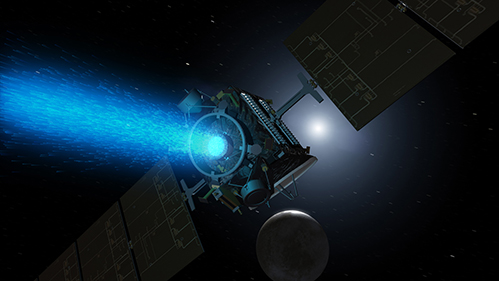Coming Up

-
CVP: Upcoming Courses
30 Apr 24 @ CVP: Various

-
MPTS 2024
15-16/05/2024 @ Olympia, London

-
KitPlus Show
18 Jun 24 @ SEC, Glasgow

Sponsor News
Thales Angénieux lenses aboard NASA Dawn mission
 Thales Angénieux (a former GTC sponsor company) has been a key partner in NASA’s programmes since the successful Ranger 7 and Apollo 11 missions of the early 1960s. Today, it continues to be closely involved in the US space agency’s space exploration programme.
Thales Angénieux (a former GTC sponsor company) has been a key partner in NASA’s programmes since the successful Ranger 7 and Apollo 11 missions of the early 1960s. Today, it continues to be closely involved in the US space agency’s space exploration programme.
Two Angénieux 150mm focal-length lenses are onboard NASA’s Dawn probe that recently obtained the first images of the dwarf planet Ceres. See the latest images of Ceres.
Dawn is the 9th mission of NASA’s Discovery programme
Dawn’s mission is to study the asteroid Vesta and the dwarf planet Ceres, two protoplanet remnants of the formation of our Solar System that lie in the asteroid belt between Mars and Jupiter. The significant feature of these two distant bodies is that they are virtually unchanged since their formation 4.6 billion years ago. The 1,300-kg probe’s three scientific instruments are designed to image and map Vesta and Ceres, analyse their gravity field and acquire spectral measurements of the abundance and distribution of rocks on their surface, as well as any significant traces of chemical elements. Dawn was launched on 27 September 2007; it then completed a flyby of Mars in February 2009 before reaching Vesta in July 2011, which it studied up close for a year. It arrived at Ceres in February this year and has already sent back incredibly detailed pictures of the dwarf planet. In particular, images acquired on 19 February show two tantalizing bright spots on its surface. Dawn reached orbit around Ceres on Friday 6 March. Its mission is scheduled to end in July. See more about the Dawn mission.
Demanding specifications for the probe’s Angénieux optics
In 2005, Thales Angénieux delivered four lenses to German firm Kayser Threde for the Max Planck Institute (MPI), responsible for Dawn’s top-tier framing camera subassembly. Two of the lenses were designed for integration with the system and two for testing and preparation. Thales Angénieux had to meet the challenge of supplying lenses capable of satisfying the mission’s particularly exacting thermal constraints (–50°C, +40°C) while withstanding the rigours of space (vacuum conditions, radiation and launch-vehicle vibrations on lift-off). Drawing on its experience from previous projects working with NASA, Thales Angénieux designed lenses that fully met these specifications. Employing the principle of passive athermalisation, Angénieux’s lenses are able to acquire clear, sharp pictures in any temperature conditions. Special types of glass were used to withstand radiations, notably gamma rays. The lenses’ titanium body offered the best resistance to launch vibrations. Also aboard Dawn’s space probe, a Traveling-Wave Tube (TWT) with an X bandwidth for scientific telecommunications (ref. TH 4300C) provided by the Thales group, first worldwide supplier of TWT for satellites and space probes.
See more about Thales Angénieux at: www.angenieux.com
Where to next?
Coming Up

-
CVP: Upcoming Courses
30 Apr 24 @ CVP: Various

-
MPTS 2024
15-16/05/2024 @ Olympia, London

-
KitPlus Show
18 Jun 24 @ SEC, Glasgow

Sponsor News
GTC on Facebook
.jpg)














